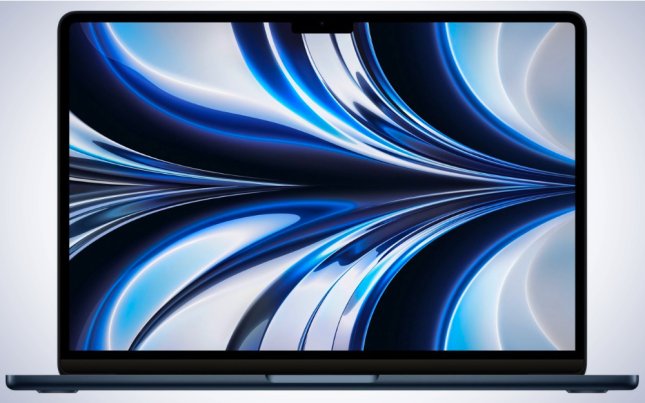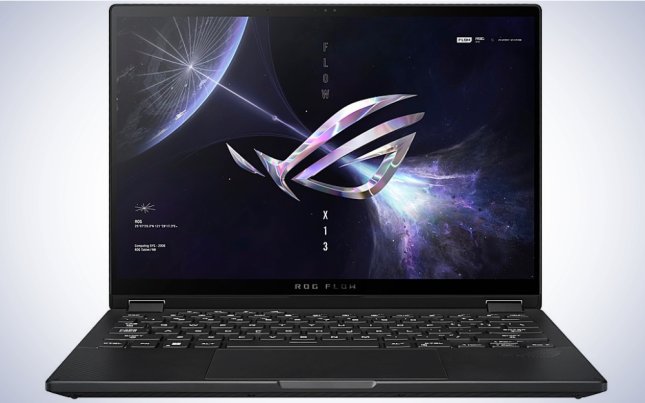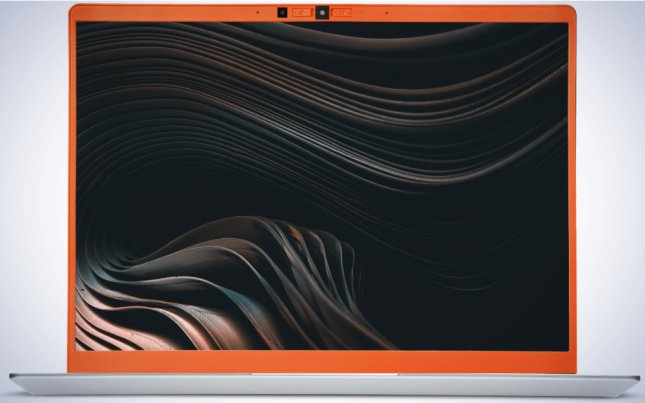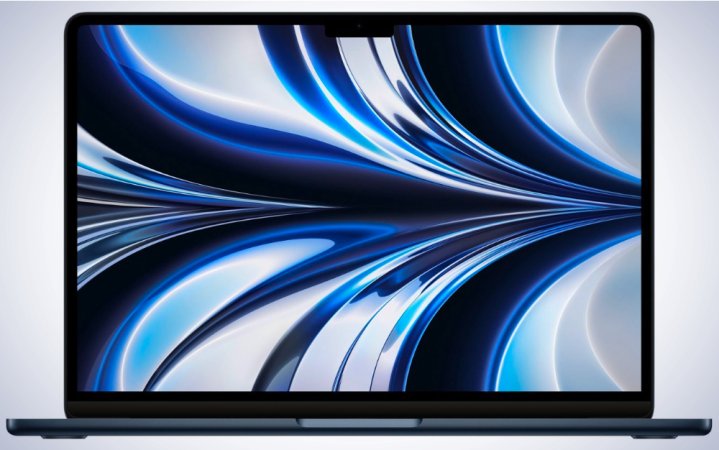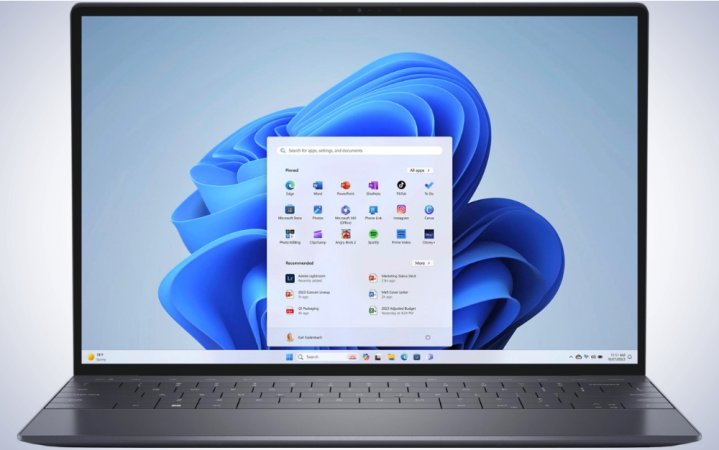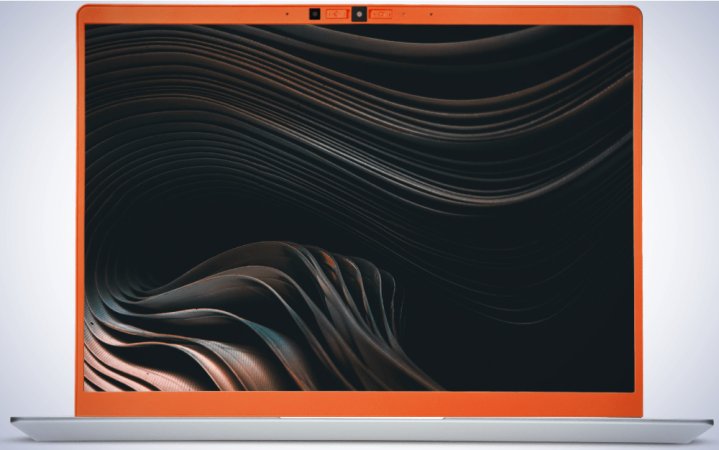We may earn revenue from the products available on this page and participate in affiliate programs. Learn more ›

Today’s 13-inch laptops offer compact and lightweight designs that can effortlessly slip into a bag, making them the ideal choice for on-the-go productivity. But just because they’re small doesn’t mean they’re not powerful. These laptops pack a punch with modern processors and ample RAM, allowing them to tackle a wide range of tasks, from everyday browsing to editing photos and videos. Many of the best models also offer beautiful high-resolution displays, providing stunning visuals for watching movies and playing games. Whether you’re a student or working a hybrid schedule, the best 13-inch laptops strike a balance of portability, performance, and versatility that can adapt to diverse lifestyles.
- Best overall: MacBook Air with M2
- Best design: Dell XPS 13 Plus
- Best for gaming: ASUS ROG Flow X13
- Best 2-in-1: HP Spectre x360 13.5
- Best budget: Framework Laptop 13
How we chose the best 13-inch laptops
Before upgrading to my current machine, I used a 13-inch MacBook Pro. The balance of size and power fit my needs during a time when I frequently traveled for work, including to CES, E3, and Mobile World Congress—crazy busy tradeshows where every ounce in your backpack counts as you’re on your feet all day. The compact design allowed me to carry it around constantly, and it could handle various tasks without issues. My experience using laptops of all sizes—plus over a decade of writing about computers—has given me valuable insight into what to look for in a 13-inch laptop. I dug into features like portability, performance, design, battery life, and affordability to find the best models of this size.
The best 13-inch laptops: Reviews & Recommendations
The 13-inch laptops on this list prioritize portability while fitting several use cases, from working at home to traveling abroad. Although 14-inch and 15-inch laptops have become more popular with the rise of remote work, the market for 13-inch laptops remains strong, with several excellent options ranging from gaming powerhouses to ultra-thin portables with long-lasting batteries. There’s even a model that you can configure and assemble yourself if you prefer the DIY approach.
Best overall: MacBook Air with M2
MacBook Air with M2
Specs
- Display: 13.6-inch Liquid Retina
- Processor: Apple M2 with 8-core CPU, 10-core GPU, 16-core Neural Engine
- Memory: 8GB
- Storage: 256GB
- Dimensions: 11.97 x 8.46 x 0.44 inches
- Weight: 2.7 pounds
Pros
- Lightweight
- Beautiful high-resolution display
- Fantastic performance
Cons
- Base model storage can fill up fast
As we found in our full review, the MacBook Air with Apple’s M2 chip is a powerful, portable laptop with a gorgeous display and sleek, lightweight design. The laptop’s M2 processor offers an 8-core CPU and 10-core GPU, while the base model includes 8GB of memory and 256GB of storage. The Air is geared toward portability but still delivers impressive performance, allowing you to handle everyday computing (e.g., working on documents, browsing the web, emailing) and more intensive tasks like editing photos, videos, and graphics.
The MacBook Air with M2 is only 0.44 inches thick and weighs a feathery 2.4 pounds, making it easy to carry around all day. Like Apple’s other laptops, the MacBook Air features MagSafe charging, Touch ID, and an expansive trackpad that supports multi-touch gestures. It also offers a comfortable scissor-switch keyboard and a 1080p webcam for higher-resolution video calls. While the Air no longer has the iconic wedge shape of years past, the laptop remains as portable as ever while offering one of the best designs on the market.
For a larger screen, we recommend the 15-inch MacBook Air. The laptop has similar specs, so you’re essentially getting the same experience in a larger chassis.
Best design: Dell XPS 13 Plus
Specs
- Display: 13.4-inch 4K OLED
- Processor: Intel 13th Generation Core i7
- Memory: 32GB
- Storage: 1TB
- Dimensions: 11.63 x 7.84 x 0.6 inches
- Weight: 2.7 pounds
Pros
- Beautiful display
- Excellent performance
- Premium design
Cons
- No 3.5mm headphone jack
Dell’s XPS line is a favorite at PopSci—the XPS 15 is our best Windows laptop—and the XPS 13 Plus is no different. Featuring a premium design and a gorgeous 4K OLED display, the 13 Plus takes some big swings that help it stand out from the crowd. Granted, not every decision is a home run, but we still consider it one of the nicest laptops at this size, thanks in large part to an invisible touchpad, all-metal build, and spacious keyboard.
The Dell XPS 13 Plus ditches the row of function keys you traditionally see above a keyboard’s numbers. Instead, Dell opted for capacitive buttons, with symbols that light up for the different functions. There’s no headphone jack. And, as we said, the trackpad is “invisible,” meaning there are no lines to indicate where it starts and ends; the area beneath the keyboard is simply one large piece of glass. While these changes may not work for everyone, they make for what is unquestionably an incredible design.
Best for gaming: ASUS ROG Flow X13
ASUS ROG Flow X13
Specs
- Display: 13.4-inch Quad HD
- Processor: AMD Ryzen 9 7000 Series
- Graphics: Nvidia GeForce RTX 4070
- Memory: 32GB
- Storage: 1TB
- Dimensions: 11.77 x 8.35 x 0.6 inches
- Weight: 2.8 pounds
Pros
- Capable of playing high-end AAA titles
- High refresh rate display
- Excellent for non-gaming tasks
Cons
- Short battery life
Ultraportable laptops are generally for getting work done in coffee shops, libraries, and airport lounges. But we all need a break from the madness. That’s where the ASUS ROG Flow X13 comes into play. With an AMD Ryzen 9 7000 Series processor and GeForce RTX 4070 GPU, ASUS’ compact laptop is the best splurge because it delivers the power and performance of larger models. That means the laptop can handle the latest AAA titles, allowing you to play your favorite titles on the go.
The X13 features a 13.4-inch Quad HD display with a 165Hz refresh rate for smooth visuals. The laptop boasts Intelligent Cooling technology to keep temperatures under control during intense gaming sessions. The system combines hardware and software to deliver impressive cooling performance when things get heated. Additionally, the X13 features a 2-in-1 convertible design for more flexibility when editing documents, watching movies, and playing games.
Best 2-in-1: HP Spectre x360 13.5
HP Spectre x360 13.5
Specs
- Display: 13.5-inch 3:2 OLED
- Processor: Intel 13th Generation Core i7
- Memory: 16GB
- Storage: 1TB
- Dimensions: 11.73 x 8.68 x 0.6 inches
- Weight: 3 pounds
Pros
- Beautiful OLED display
- Versatile 2-in-1 design
- Long battery life
Cons
- So-so battery life
The HP Spectre x360 13.5 is a terrific convertible with a sleek and portable design that’s great for traditional laptop and tablet use cases. You can configure it with a 3:2 aspect ratio OLED display, offering vibrant colors, high contrast, and deep blacks. The 3:2 aspect ratio provides more vertical space, making it perfect for browsing the web and working on documents.
The 2-in-1 is powered by an Intel 13th Generation Intel Core i7 Evo processor, delivering fantastic performance for demanding tasks and creative projects. Meanwhile, the laptop boasts a sophisticated design with a premium aluminum chassis and 360-degree hinge to transition between laptop and tablet modes. It’s this versatility that makes the Spectre x360 13.5 such a great tool for different scenarios, whether you’re working or relaxing.
Best budget: Framework Laptop
Specs
- Display: 13.5-inch
- Processor: AMD Ryzen 5
- Memory: 8GB
- Storage: 250GB
- Dimensions: 11.68 x 9.01 x 0.62 inches
- Weight: 2.8 pounds
Pros
- Endlessly customizability
- Easily repairable
- Compact, lightweight design
Cons
- Can take a while to ship
For those who want full control over the components in their laptop, the Framework Laptop 13 is worth checking out. Thanks to its modular design, you can pick the exact components and ports you want, giving you a laptop tailored to your individual taste. Everything from the processor, storage, and RAM can be upgraded down the line, and you can swap out other parts whenever you want.
These features give the Framework Laptop 13 a unique place in the market. For DIY enthusiasts, the machine provides a lot of value by giving you greater control over the experience. Want more USB-C ports? Buy an expansion card. Want to add Ethernet? Buy an expansion card. It’s a unique take on the modern laptop and a fun solution for anyone with experience building a PC. In addition to its modular design, the Framework features a bright, high-resolution display, a spacious trackpad, and biometrics.
What to consider when buying a 13-inch laptop
The primary selling point of a 13-inch laptop is its portability. But there are other factors to consider outside of its size. We’ve rounded up the 13-inch models that cater to all preferences and budgets.
Processor
A processor is the brain of a laptop and is responsible for orchestrating everything the computer does, from basic tasks to complex computations. From loading applications to playing games, the processor handles it all. The latest processor from Apple is the M3, combining the CPU, graphics processing unit (GPU), security enclave, neural engine, and shared memory on a single piece of silicon. For Windows laptops, Intel and AMD are the primary CPU makers, with the latest being Intel’s 13th Gen Core and AMD Ryzen 7000 Series processors. Intel is planning to launch a more powerful processor codenamed Meteor Lake at the end of this year.
To ensure smooth operation, consider the processor’s clock speed (measured in GHz) and the number of cores, especially for demanding tasks like content creation. The higher the GHz and the more cores generally translates to better performance. If you primarily browse the web and check emails, a processor with lower GHz and fewer cores will suffice (and save you money!). However, for multitasking, gaming, or creative work, a more robust processor with higher GHz and more cores is recommended.
Graphics
While the CPU handles the main tasks, the GPU is specially designed to take on the heavy lifting of everything related to graphics. This includes displaying images, videos, and animations, making the GPU crucial for gaming, video editing, and even web browsing. The more powerful the GPU, the smoother and better-looking the graphics will be. Laptops either feature an integrated or dedicated GPU; integrated graphics include the GPU on the same chip as the CPU.
Powerful laptops often feature dedicated GPUs for enhanced performance, especially those designed for gaming. However, there’s a trade-off: dedicated GPUs can make a laptop heavier and bulkier, which might not be ideal for users prioritizing portability. Additionally, these GPUs consume more power, meaning you’ll need to be more mindful of your battery life and charging habits to avoid running out of juice when no outlet is nearby.
Memory
Random Access Memory, or RAM, serves as a temporary workspace for applications to store data the computer needs to access quickly. More RAM means more space for the laptop to work with, resulting in faster performance and smoother multitasking. We recommend a minimum of 8GB for more basic tasks, like web browsing and emailing. Consider at least 16GB of RAM if you plan to run multiple applications simultaneously. Choosing the right amount of RAM is essential for a smoother computing experience. While it can be expensive to configure your computer with more RAM, it may be worth it since you generally can’t upgrade after the fact.
Display
Your laptop’s display is another key element to an enjoyable user experience. One important factor is the display’s resolution, which refers to the number of pixels packed into the screen. The more pixels, the sharper and more detailed the display will appear. High-end laptops often boast 2K (2560×1440) or even 4K (3840×2160) resolutions, ideal for content creation and multitasking due to the increased screen real estate. Budget-friendly models might offer 1080p (Full HD) resolutions, sufficient for basic tasks like editing documents and web browsing.
The panel technology is equally important, impacting the viewing experience. IPS (in-plane switching) panels offer wider viewing angles and good color accuracy, making them suitable for everyday tasks. OLED (organic light-emitting diode) panels deliver superior contrast and vibrant colors. Gamers might prioritize high refresh rate displays (120GHz and above) for smoother animations, which can provide an edge in fast-twitch games like Call of Duty.
For professionals working with images and videos, accurate color representation is crucial. Look for displays with at least 95% sRGB color gamut coverage to ensure realistic and consistent colors. DCI-P3 offers an even wider color range, providing 26% more color space than sRGB. This extended color range allows for more vivid and saturated colors, making it an excellent choice for tasks that demand vibrant imagery.
Storage
Solid-state drives (SSD) are the new standard for laptop storage, employing more advanced technology than traditional hard drives. SSDs have no moving parts, translating to lightning-fast speed for loading files and applications. Home consoles like the Xbox Series X and PlayStation 5 all have SSDs. An SSD is a game-changer whether you’re a gamer or content creator.
For most users, a 256GB SSD provides enough storage for all the stuff that may accumulate on your laptop over a few years. Consider upgrading to a 512GB or even 1TB SSD if you work with large documents, photos, and videos. Alternatively, a portable hard drive can offer additional storage while reserving your laptop’s storage for important documents and applications.
Connectivity
Just because this section is last doesn’t make it any less important. While traditional USB-A ports are still relevant for various peripherals, newer laptops generally feature USB-C and Thunderbolt 4. These high-bandwidth ports enable blazing-fast data transfer, simplifying tasks like importing and exporting large media files.
An HDMI port lets you connect your laptop to an external display, ideal for multitasking and gaming. Meanwhile, a built-in card reader is handy for transferring media from a camera’s memory card to your laptop. You can use a USB hub to extend your laptop’s connectivity options if it doesn’t have all the necessary ports. However, built-in ports provide the most seamless and hassle-free experience, eliminating the need for additional accessories and simplifying your work setup.
FAQs
No, a 13-inch laptop isn’t too small. Laptops in this range are more compact, sure, but they’re still great for getting work done. Their size makes them easier to carry for extended periods and puts less strain on your back. Of course, there are some cons to using a smaller laptop. The smaller screen can limit multitasking, while the typing experience may not be ideal since the keyboard on a 13-inch laptop can be cramped. Ultimately, it comes down to what fits your preferences and budget. If you need the most screen real estate possible for multitasking, consider a 14-inch laptop or 15-inch laptop. That said, if you travel frequently or need to use your laptop on the go, a 13-inch laptop is easier to carry around.
Absolutely, though you’ll make certain concessions with a laptop under $500—the main one being that a large majority of choices will run ChromeOS. Compared to laptops with Windows or macOS, it’s a much more lightweight operating system, but it can handle the most common scholastic tasks—writing documents, creating presentations, reading, and sending e-mail—with ease. You shouldn’t expect the hardware of even the best budget 13-inch laptops under $500 to run full video editing and music production suites without some hiccups, nor play AAA games, but something like the Lenovo Flex 5 can still be an extremely handy machine for basic productivity.
It depends. You can find powerful gaming laptops at this size, but they generally won’t be as powerful as larger models. The compact size can also lead to thermal throttling, especially during intense gaming sessions, resulting in decreased performance and fan noise. Likewise, the screen size isn’t ideal for longer gaming sessions, especially for fast-paced or competitive games where every detail matters. Still, a 13-inch gaming laptop offers portability, making it easy to game anywhere. If gaming is your top priority, consider something bigger (or, better yet, consider building a gaming PC). Our roundup of the best gaming laptops, as well as the best cheap gaming laptops, will give you a better idea of the ideal balance of size, performance, and price.
Final thoughts on the best 13-inch laptops
- Best overall: MacBook Air with M2
- Best design: Dell XPS 13 Plus
- Best for gaming: ASUS ROG Flow X13
- Best 2-in-1: HP Spectre x360 13.5
- Best budget: Framework Laptop 13
The MacBook Air with M2 is the best 15-inch laptop, so it’s no surprise it’s also the best 13-inch laptop. It’s thin, lightweight, and offers enough power to handle most tasks, including editing photos and videos. The laptop also features arguably the nicest design in Apple’s lineup. If you prefer Windows, the options above should fit the bill. Whether you need something for school or work, you can’t go wrong with any of our picks. The choice comes down to your preferences and budget.
